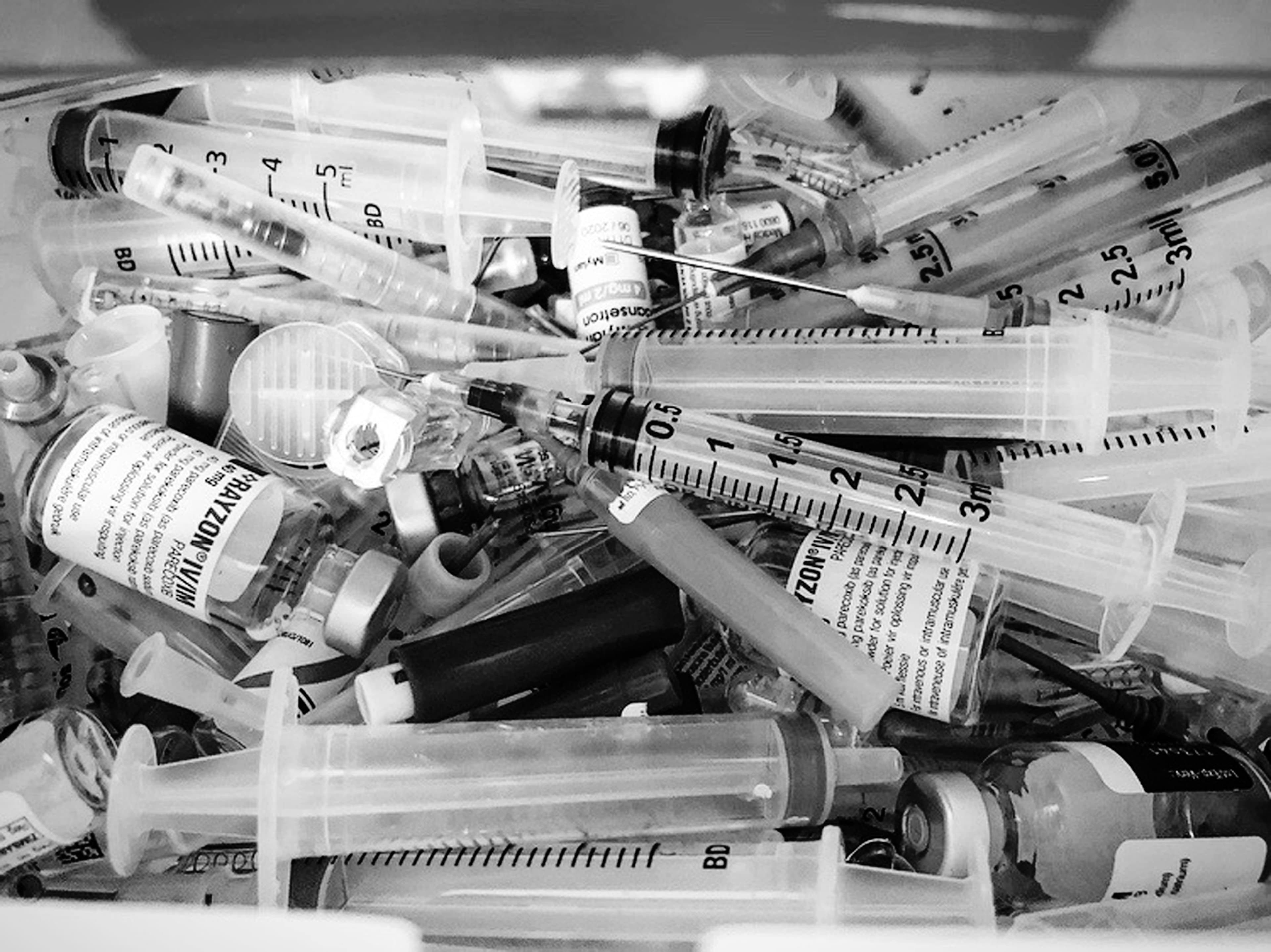Harm Reduction: What is it, Principles and Examples

In This Article
How does harm reduction work?
Harm reduction strategies take into account that abstinence is not the best path for everyone. The goal is to reduce the impact of substance use, and often includes combining different strategies and treatments.
Some harm reduction plans might include counseling, strategies for safer use of both legal and illegal drugs, or even petitioning lawmakers to change how the justice and healthcare systems work (1, 2, 3, 4).
Where abstinence programs focus squarely on one specific behavior, harm reduction involves a wider approach. Instead of eliminating all drug use, people are encouraged to take measures to lessen the impact drug use has on their lives.
While the person receiving treatment takes on the bulk of this responsibility, harm reduction acknowledges that some of it belongs to the healthcare industry, law enforcement, and lawmakers.
Key principles of harm reduction
Harm reduction strategies focus on treating the effects of substance use in a nonjudgmental way. The National Harm Reduction Coalition lists eight guiding principles (1):
Drug use is inevitable. To “ignore or condemn” its effects will just make things worse.
- There are safe and ethical ways to use drugs. The cold turkey approach doesn’t work for everyone.
- Improving quality of life should be the main treatment goal.
- Individuals and agencies providing harm reduction treatment must be nonjudgmental and evidence-based in their approach.
- People who use drugs should have an active part in their treatment.
- People who use drugs should be empowered and encouraged to help each other.
- Socioeconomic factors need to be considered when treating substance use.
- Treatment providers must keep in mind the real damage substance use can do.
Example approaches of harm reduction
Harm reduction can take many forms. Some examples of major harm reduction strategies are:
- Needle exchange programs
- Free condom and dental dam distribution
- Free physical and mental health care clinics
- Overdose prevention treatments, like naloxone (Narcan)
- Group counseling or motivational interviewing (
- Safe use sites
- Medication-assisted treatment, like methadone and buprenorphine for heroin withdrawal
Some strategies involve making smaller or momentary changes, like:
- Taking a cab home from the bar instead of driving
- Using nicotine gum or patches instead of smoking
- Cutting back on drug use, even a tiny bit
- Adding healthy habits to your day, like exercise or a balanced diet
- Alternating water with alcoholic drinks
- Finding new friends or a new job
- Making use of in-home care and assistance options
Abstinence vs. harm reduction
| Abstinence | Harm reduction | |
|---|---|---|
| Goal | Zero substance use | Minimize the damage done by substance use |
| Difficulty | Extreme; relapse rates can exceed 70% | Moderate; incremental progress is recognized as success |
| Impact | Dramatic | Varies for each person |
| Difficulty of Progress | Extreme | Can be easier due to smaller and more achievable goals |
| Flexibility | Almost none | Infinite |
| Burden of Responsibility | Mostly on the person receiving treatment | Healthcare providers, lawmakers, and the judicial system share the burden |
| History | Alcoholics Anonymous was founded in 1935 | The first U.S. needle exchange program was started in 1983 |
Can harm reduction be used as a treatment?
Harm reduction can be effectively and safely used as a treatment for substance use. While it won’t deliver the extreme results an abstinence program can, harm reduction strategies are much easier to stick to and offer encouragement with each small victory.
An effective harm reduction plan can bring immediate and significant changes not only to the lives of people who use drugs, but also to those close to them.
Needle exchange and overdose clinics have proven to be effective in lowering death and disease rates (8). While harm reduction may not be an effective strategy for everyone, it is a gentler and more accepting way of treating substance use than abstinence.
Both approaches require a great deal of self-management and a robust support network, but harm reduction offers a more achievable goal and more widespread effects. The two can even be used together, with zero drug use one goal of a harm reduction plan.
Is harm reduction effective in the long term?
Harm reduction strategies have proven to be effective over the long term in helping lower HIV transmission rates in the United States, Canada, Australia, and much of Europe. Programs have also been credited with reducing drug use in Canada, Australia, and a handful of western and northern European countries (9).
But in the long term, harm reduction may not be as effective as abstinence, at least when it comes to alcohol use disorder.
For example, one study found that while harm reduction had a slightly higher success rate than abstinence, people in recovery from alcohol use disorder who stuck to their cold turkey approach reported a higher quality of life (10).
Abstinence strategies have a several-decade head start on harm reduction programs, and they both continue to develop and evolve.
While each approach has its clear pros and cons, harm reduction strategies appear to have greater potential for lasting effects on the largest number of people.
Critiques of harm reduction
Is harm reduction evidence-based?
At its core, harm reduction is an entirely evidence-based philosophy. It requires both the people seeking and providing treatment to set aside their judgment and work on improving the life of the person who is using drugs in measurable ways.
Abstinence programs, particularly AA, focus on behavior, whereas harm reduction strategies focus on results. These strategies measure success by whether a community is made safer or healthier.
That improvement can take many forms, from a drop in crime rates to less frequent overdose hospitalizations and deaths.
Does harm reduction encourage drug use?
Harm reduction acknowledges that an abstinence strategy may not be best for everyone, but it does not encourage drug use. In fact, a key part of most harm reduction strategies is the reduction or elimination of drug use.
One study even found that people who took part in a needle exchange program were more likely to seek treatment on their own later (11).
Abstinence strategies are believed to be successful only 40% to 60% of the time, which means about half of the people who choose this path use drugs again (12).
People who choose harm reduction over abstinence may never stop using drugs altogether. But they can often learn to make healthier choices that improve their quality of life.
Does AA allow harm reduction?
AA does not allow harm reduction as part of its treatment philosophy. People seeking harm reduction treatment through AA are instead referred to another organization called HAMS, which stands for Harm Reduction, Abstinence, and Moderation Support (13).
According to the AA website, the conflict between the two approaches comes down to agency and power.
AA’s method involves admitting that one has no power over their addiction. Harm reduction strategies often include helping the person using drugs to seize control of their own lives.
About The Author
Joe is a writer and radio/podcast host with experience covering medicine, sports, politics, and entertainment. You can follow him on Twitter @joecapraro, listen to his weekly talk show The Sports Plus Show, or read his thoughts about television and movie happenings at Looper. He currently lives in Portland, Oregon with his medium brown dog Dexter.





